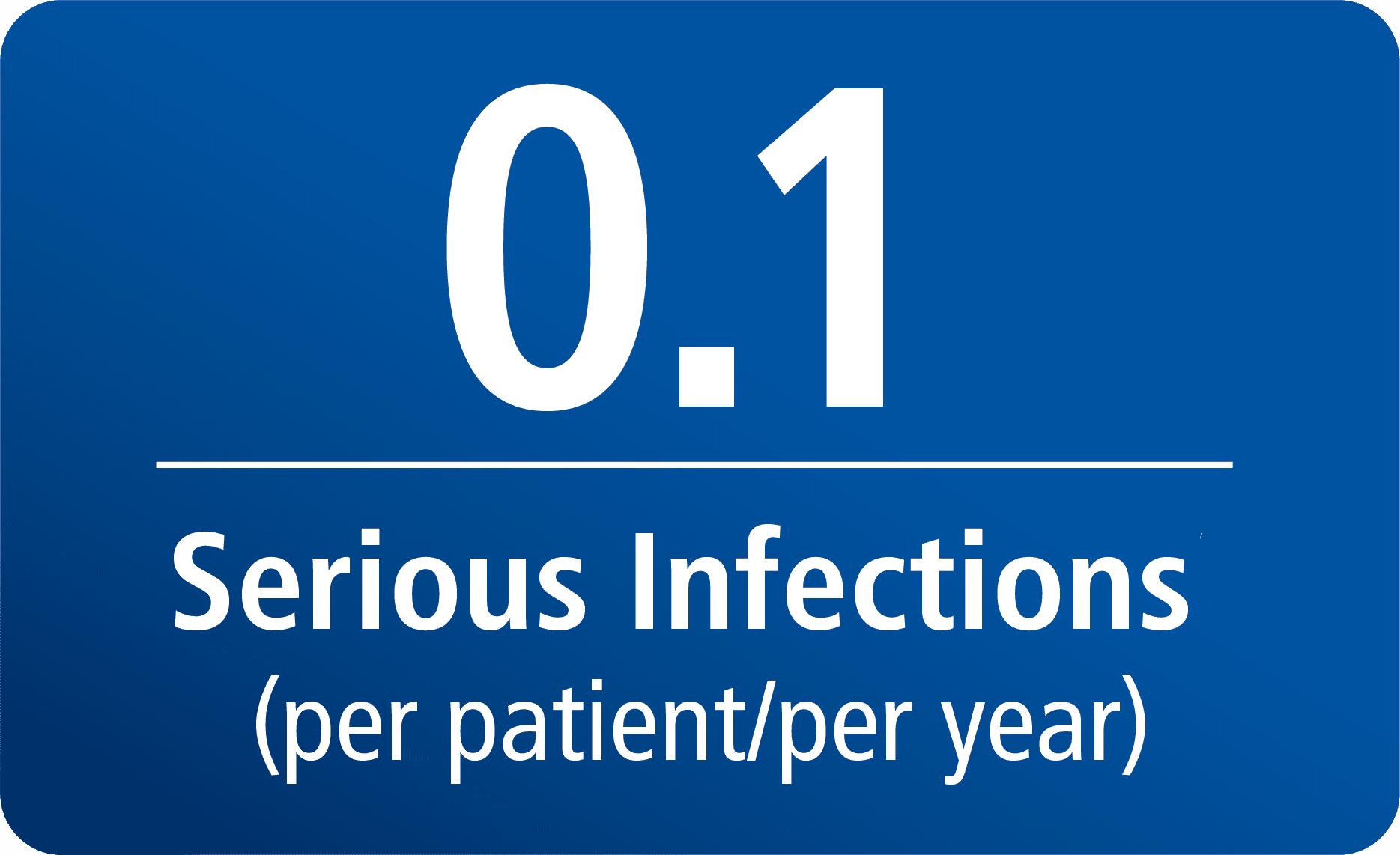- Thrombosis may occur with immune globulin intravenous (IgIV) products, including octagam® 5% liquid. Risk factors may include: advanced age, prolonged immobilization, hypercoagulable conditions, history of venous or arterial thrombosis, use of estrogens, indwelling vascular catheters, hyperviscosity, and cardiovascular risk factors.
- Renal dysfunction, acute renal failure, osmotic nephrosis, and death may occur in predisposed patients with IgIV products, including octagam® 5% liquid. Renal dysfunction and acute renal failure occur more commonly with IgIV products containing sucrose. octagam® 5% liquid does not contain sucrose.
- For patients at risk of thrombosis, renal dysfunction, or acute renal failure administer octagam® 5% liquid at the minimum dose and infusion rate practicable. Ensure adequate hydration in patients before administration. Monitor for signs and symptoms of thrombosis and assess blood viscosity in patients at risk for hyperviscosity.
Indications and Use
octagam 5% is an immune globulin intravenous 5% liquid indicated for treatment of primary humoral immunodeficiency (PI), such as congenital agammaglobulinemia, common variable immunodeficiency, X-linked agammaglobulinemia, Wiskott-Aldrich syndrome, and severe combined immunodeficiencies.
Important Safety Information
Contraindications
octagam® 5% liquid is contraindicated in patients who have acute severe hypersensitivity reactions to human immunoglobulin; in IgA-deficient patients with antibodies against IgA and history of hypersensitivity; in patients with acute hypersensitivity reaction to corn. octagam® 5% liquid contains maltose, a disaccharide which is derived from corn. Patients known to have corn allergies should avoid using octagam® 5% liquid.
Warnings and Precautions
Monitor renal function, including blood urea nitrogen and serum creatinine, and urine output in patients at risk of developing acute renal failure.
Falsely elevated blood glucose readings may occur during and after the infusion of octagam 5% liquid with some glucometer and test strip systems.
Hyperproteinemia, increased serum viscosity, and hyponatremia occur in patients receiving lglV therapy.
Thrombosis may occur following treatment with immune globulin products, including octagam 5% liquid. Monitor for signs and symptoms of thrombosis and assess blood viscosity in patients at risk for hyperviscosity.
Aseptic meningitis syndrome has been reported with octagam 5% liquid and other lglV treatments, especially with high doses or rapid infusion.
Hemolytic anemia can develop subsequent to lglV therapy due to enhanced RBC sequestration.
lglV recipients should be monitored for pulmonary adverse reactions such as transfusion-related acute lung injury (TRALI).
The product is made from human plasma and may contain infectious agents, e.g. viruses and, theoretically, the Creutzfeldt-Jakob disease agent.
Adverse Events
The most serious adverse reactions observed with octagam 5% liquid treatment have been immediate anaphylactic reactions, aseptic meningitis, and hemolytic
The most common adverse reactions with an incidence of >5% during a clinical trial were headache and nausea.
Please see octagam 5%® full Prescribing Information




